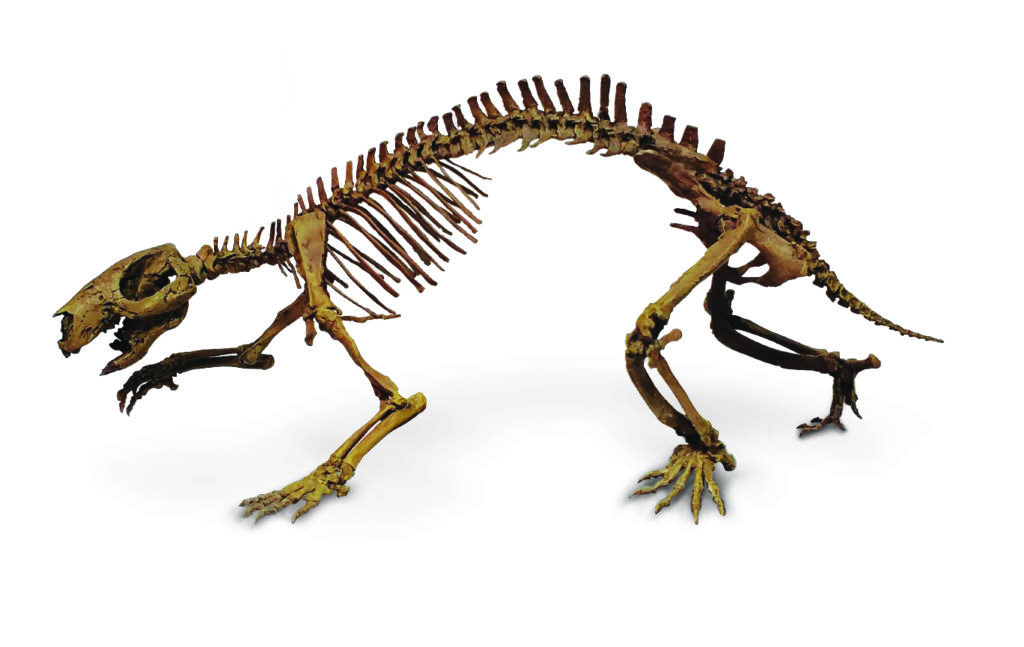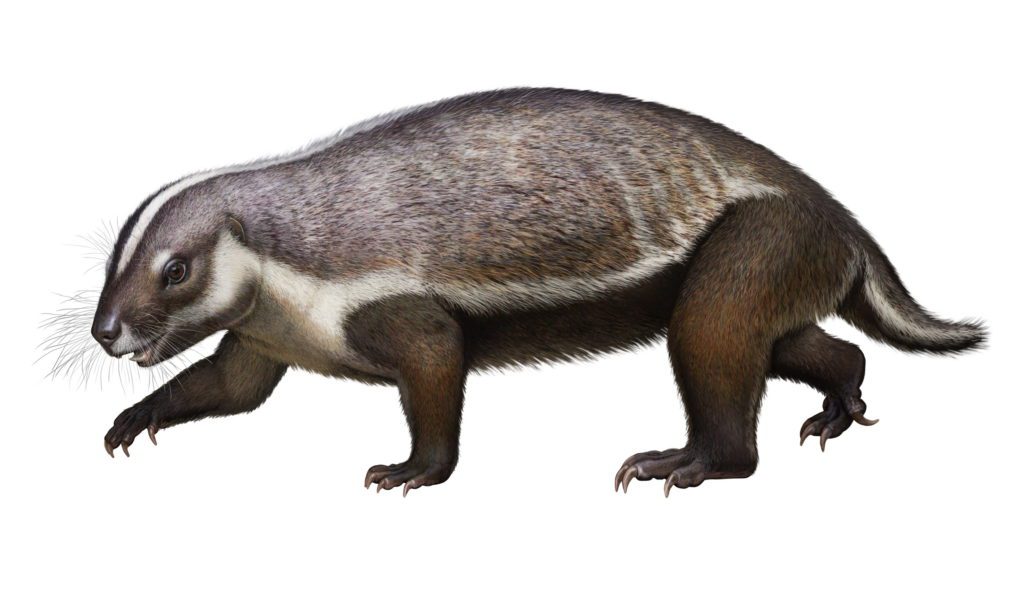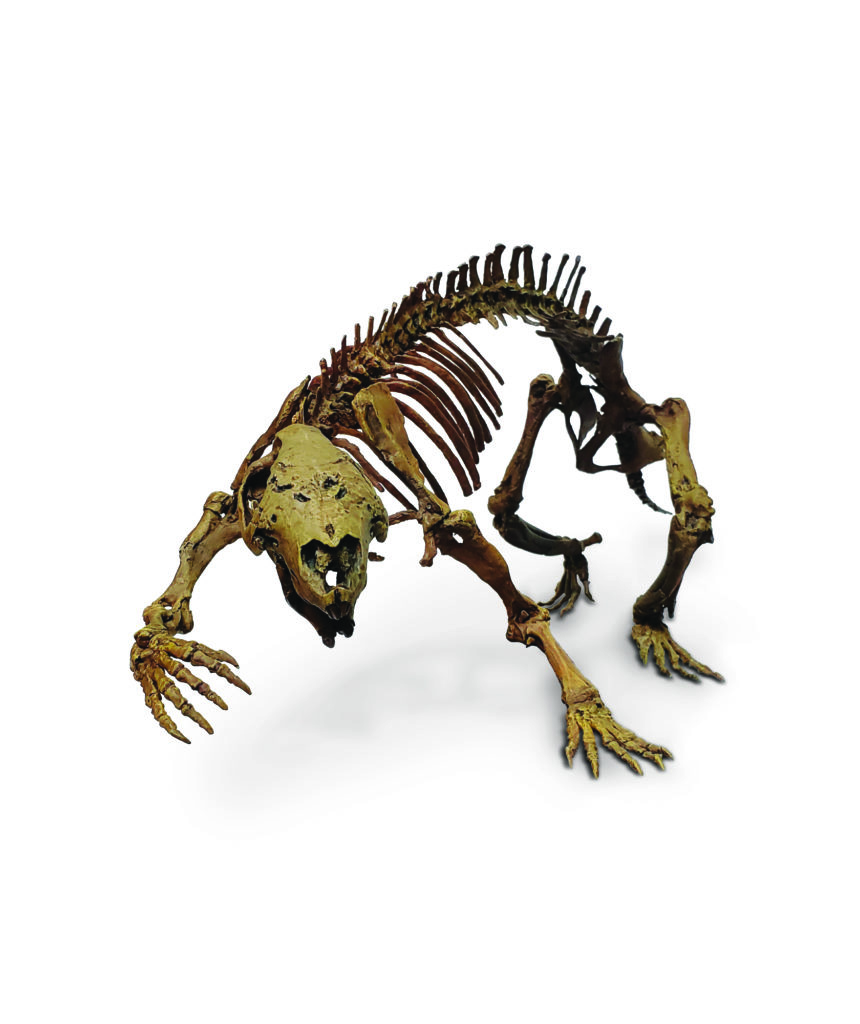
Today in the journal Nature, an international team of researchers led by Dr. David Krause, senior curator of vertebrate paleontology at Denver Museum of Nature and Science, and including Dr. John Wible, curator of mammals at Carnegie Museum of Natural History, announced the discovery of a 66-million-year-old fossil mammal skeleton from Madagascar. The opossum-sized creature, which in life might have weighed eight pounds, is now known to science as Adalatherium, or “crazy beast,” a name derived from the Malagasy word for crazy (“adala”) and the Greek word for beast (“therium”).

Adalatherium belongs to an extinct group of mammals called gondwanatherians because they are only known from the ancient southern supercontinent Gondwana. Gondwanatherian fossils were first found in Argentinia in the 1980s, but have since been found in Africa, India, the Antarctic Peninsula, and Madagascar. In the study of the exquisitely preserved fossil, Dr. Wible’s expertise contributed to the study of the skull bones and the analysis of placing Adalatherium on the tree of life, providing the broad comparative context from his work on fossil and living mammals.

The skull of Adalatherium presents plenty of unusual features:
- It has primitive features in its snout region including a septomaxilla bone, which is only found in the egg-laying monotremes among living mammals.
- It had more holes (foramina) on its face than any known mammal, holes that served as passageways for nerves and blood vessels supplying a very sensitive snout that must have been covered with whiskers.
- There is one very large hole on the top of its snout for which there is just no parallel in any known mammal, living or extinct.
- The teeth of Adalatherium are vastly different in construction than any known mammal.
Because of these features and the completeness of the one known specimen, Wible terms the discovery of Adalatherium “an unprecedented opportunity to reconstruct the anatomy and lifeway of a gondwanatherian and to place it on the mammal tree of life.”
Study co-authors include Simone Hoffmann of New York Institute of Technology; the late Yaoming Hu of Stony Brook University; Guillermo W. Rougier of University of Louisville (a Carnegie Museum of Natural History Research Associate); E. Christopher Kirk of University of Texas at Austin; Joseph R. Groenke of Stony Brook University and Ohio University; Raymond R. Rogers of Macalester College; James B. Rossie of Stony Brook University; Julia A. Schultz of Institut für Geowissenschaften der Universität Bonn; Alistair R. Evans of Monash University and Museums Victoria; Wighart von Koenigswald of Institut für Geowissenschaften der Universität Bonn; and Lydia J. Rahantarisoa of Université d’Antananarivo.
Dr. Wible’s research is focused on the tree of life of mammals, understanding the evolutionary relationships between living and extinct taxa, and how the mammalian fauna on Earth got to be the way it is today. He uses his expertise on the anatomy of living mammals, in particular the skull, to reconstruct the lifeways of extinct mammals.
